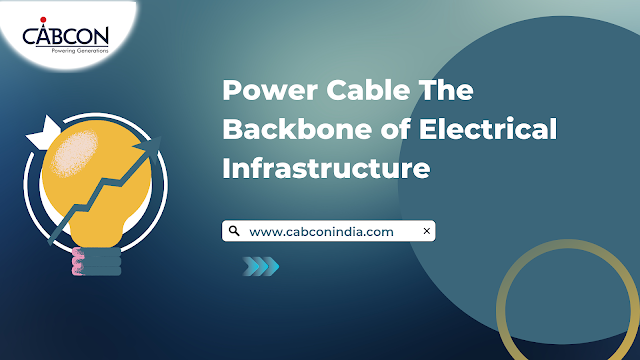Power cables are the lifeline of modern electrical infrastructure. They transmit electricity from the source to the end-users, ensuring uninterrupted power supply across residential, commercial, and industrial sectors. Power cables are essentially insulated conductors that carry electric power from one point to another. They come in various sizes and types, depending on the application, voltage, and current rating.
Types of Power Cables
Power cables can be
broadly categorized into three types - low voltage, medium voltage, and high
voltage. Low voltage cables typically carry up to 1000 volts and are used for
domestic and light commercial applications. Medium voltage cables, on the other
hand, carry between 1000 and 35,000 volts and are used for heavier commercial
and industrial applications. High-voltage cables have above 35,000 volts and
are used in power transmission lines.
Construction of Power Cables
A power cable comprises
one or more insulated conductors that are enclosed in an outer sheath. The
conductor is usually made of copper or aluminum, which are good conductors of
electricity. The insulation material used for the conductor can be PVC
(polyvinyl chloride), XLPE (cross-linked polyethylene), or EPR (ethylene
propylene rubber). The outer sheath, which protects the cable from mechanical
and environmental damage, can be made of PVC, PE (polyethylene), or LSZH (low
smoke zero halogens).
Benefits of Power Cables
Power cables have
several advantages over other methods of power transmission, such as overhead
lines. For starters, they are more reliable and less prone to outages due to
weather conditions. They are also less susceptible to interference from
external sources, such as radio waves, which can affect the quality of the power
supply. Power cables are also more aesthetically pleasing than overhead lines,
as they can be buried underground, thereby reducing visual clutter. One of the
significant advantages of power cables over other methods of power
transmission, such as overhead lines, is their reliability. Power cables are
less prone to outages due to weather conditions like storms, lightning
strikes, and high winds. They are also less susceptible to interference from
external sources, such as radio waves, which can affect the quality of the power
supply. Power cables are also more aesthetically pleasing than overhead lines,
as they can be buried underground, thereby reducing visual clutter. Moreover,
underground cables are less vulnerable to damage from environmental factors
such as storms, high winds, and ice.
Maintenance of Power Cables
Maintenance of power
cables is critical to ensure their longevity and efficient functioning. The
maintenance of power cables includes periodic inspections to detect any signs
of wear and tear, damage, or corrosion. The insulation resistance and
continuity of the conductor must also be checked regularly to ensure that the
cable is not deteriorating. Any faults detected during the inspection should be
repaired promptly to prevent further damage. Regular maintenance ensures that
power cables operate efficiently, minimize power losses, and extend their
useful life.
Like any other
electrical equipment, power cables require regular maintenance to ensure their
longevity and efficient functioning. The maintenance of power cables includes
periodic inspections to detect any signs of wear and tear, damage, or
corrosion. The insulation resistance and continuity of the conductor must also
be checked regularly to ensure that the cable is not deteriorating. Any faults
detected during the inspection should be repaired promptly to prevent further
damage.
Power cables are an
essential component of modern electrical infrastructure. They play a vital role
in transmitting electricity from the source to the end users, ensuring an
uninterrupted power supply. Power cables come in various types and sizes,
depending on the application, voltage, and current rating. They offer several
advantages over other methods of power transmission and require regular
maintenance to ensure efficient functioning. With the increasing demand for
electricity, power cables will continue to be the backbone of electrical
infrastructure for years.

Comments
Post a Comment